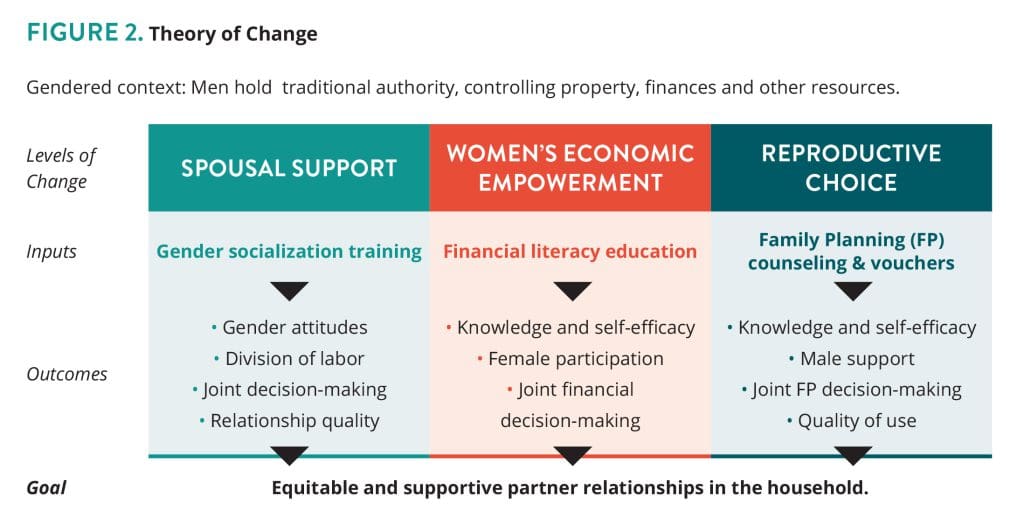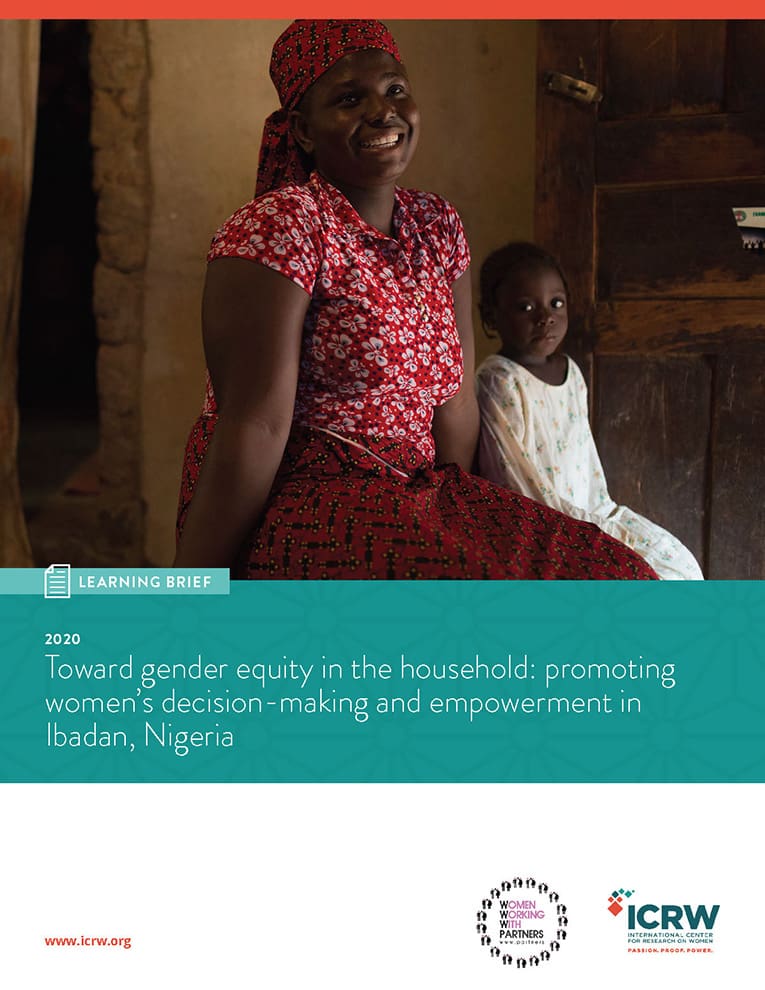
Toward gender equity in the household: promoting women’s decision-making and empowerment in Ibadan, Nigeria
Economic Opportunity & Security, Family Planning, Men and Masculinities, Reproductive Empowerment
2020
This report highlights findings from a gender synchronized, couples-based female empowerment program implemented in Ibadan, Nigeria. The program aimed to foster greater female decision making within the household by intervening in key arenas of their disempowerment — relationship with their partner, and economic and reproductive arenas.

Overall, the quantitative and qualitative findings signaled positive shifts in gender-related outcomes, including household decision-making, division of labor and male attitudes. More specifically, an in-depth analysis revealed that the gender socialization component of the intervention was the critical piece for achieving improved gender relations and equitable attitudes, while the other interventions had limited benefits. The gender socialization component created a space for women and men to critically reflect and challenge the norms that perpetuate inequalities between women and men, helping to enable participants to internalize a new way of perceiving women and men’s roles in the household and applying them in their own live. However, a major drawback to the program was that it was delivered for a brief duration; hence, it was difficult to determine whether the shifts in behaviors and attitudes observed at the end of the program will hold.
Overall, the findings underscore the need to engage couples in efforts to improve household outcomes by integrating gender sensitization components to dismantle harmful norms and improve spousal relations.
 Key Recommendations:
Key Recommendations:
- Continue to utilize gender synchronized approaches in women’s empowerment interventions.
- Carry out more primary research to understand appropriateness and implementation of gender synchronized, couples-based approaches.
- Incorporate gender trainings and capacity strengthening elements for program implementers.
- Consider longer program implementation timelines.
- Consider sustainability and scale-up of gender transformative interventions.
- Structure and design gender-transformative interventions in ways that directly relate to structural change.
Read the full publication by clicking the button below.
